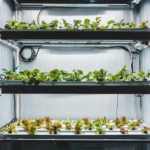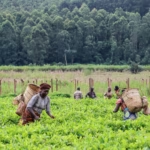
Africa’s agricultural sector is not only a cornerstone of the continent’s economy but also a major catalyst for rural development agriculture. As global demand for natural, organic, and ethically sourced agricultural products continues to grow, Africa’s exports of nuts, grains, oilseeds, spices, and other commodities are creating a ripple effect across rural communities. These exports are generating employment, enhancing infrastructure, improving household incomes, and uplifting entire regions that were once economically stagnant.
This blog explores how the expansion of African agri-exports is contributing to rural development agriculture, the ways in which communities are benefiting, and why sustained investment in this space is crucial for long-term growth.
The Link Between Agri-Exports and Rural Economies
Agricultural exports serve as a lifeline for many African economies. Countries such as Nigeria, Ghana, Kenya, Tanzania, and Ivory Coast depend heavily on the export of agricultural commodities to fuel national income. But beyond macroeconomic figures, it is in the rural heartlands—where most farming takes place—that the real transformation is happening.
Through improved access to international markets, farmers in remote areas now have a chance to increase their earnings, expand production, and invest in better farming inputs. This steady growth is contributing directly to rural development agriculture, allowing smallholders to rise above subsistence levels and participate meaningfully in the commercial value chain.
Job Creation and Household Incomes
One of the most immediate effects of agri-exports on rural development is job creation. As demand for African commodities increases, so does the need for labor. Whether it’s harvesting sesame seeds, sorting cashews, drying hibiscus petals, or packing spices, the value chain creates opportunities across multiple touchpoints.
Agri-export operations often hire workers for farm-level tasks, warehousing, transportation, and processing—activities that offer income to thousands of people who might otherwise remain unemployed or underemployed. This is particularly significant in regions where alternative employment options are scarce.
Moreover, for smallholder farmers, higher earnings from exports mean improved quality of life. With additional income, families can invest in their children’s education, health care, better housing, and even diversify into other small businesses. This economic upliftment fuels the engine of rural development agriculture at a household level.
Infrastructure Development in Export-Active Regions
Another ripple effect of growing agri-export activity is the development of rural infrastructure. Roads, storage facilities, water systems, and electricity grids are often extended or upgraded to support increased production and transportation needs.
For instance, when export companies establish collection centers or warehouses in remote areas, they frequently partner with local governments or donors to improve road connectivity and logistics. These infrastructure improvements don’t just benefit the export industry—they enhance access to markets, education, and healthcare for the entire community.
As rural development agriculture accelerates, more villages become integrated into regional and national economic systems, reducing isolation and increasing resilience.
Women’s Empowerment and Gender Inclusion
The agri-export sector has also become a platform for advancing gender inclusion in Africa. In many regions, women play a vital role in the production and processing of export commodities. They are particularly active in value chains like shea nuts, hibiscus, and spices.
Empowering women through access to export markets and income-generating opportunities contributes significantly to rural development agriculture. Numerous studies have shown that when women have more control over financial resources, they reinvest more into their families and communities, further accelerating local development.
Export companies that engage women’s cooperatives or provide gender-focused training and support are contributing not only to equitable growth but also to stronger and more sustainable value chains.
Export Quality Standards as a Catalyst for Agricultural Training
To meet the expectations of global buyers, African farmers and cooperatives must comply with quality, safety, and traceability standards. This requirement has led to an increase in agricultural training programs, extension services, and technical support.
Farmers who participate in training programs become more efficient and productive. They learn sustainable farming practices, post-harvest handling, and the importance of certification. These skills, once acquired, benefit not only the export crops but all other crops they grow.
This knowledge transfer is central to long-term rural development agriculture, as it builds a more skilled and confident generation of farmers ready to scale their businesses and adapt to market changes.
Community Investment and Social Impact
Agri-exporters who are committed to long-term partnerships with farming communities often invest directly in social development initiatives. These may include building schools, funding health clinics, providing clean water, or offering financial literacy programs.
Organizations like Ahar Group, for example, work closely with farmers across Africa, providing fair contracts, technical training, and post-harvest support. Their model not only guarantees a consistent supply of export-quality produce but also ensures that value is shared equitably with the producers—an essential component of rural development agriculture.
Such community investments create a more inclusive agricultural ecosystem where profits go beyond the boardroom and into villages and households that need them most.
Challenges to Be Addressed
Despite these benefits, there are still barriers that can limit the full potential of agri-exports to drive rural development agriculture. These include:
- Limited access to financing for smallholder farmers
- Inadequate infrastructure in very remote areas
- Volatility in global market prices
- Lack of farmer education on export requirements
- Risk of overdependence on a single export crop
To overcome these challenges, collaboration between governments, private exporters, NGOs, and international trade partners is essential. Creating enabling environments with the right policies, infrastructure, and investment channels will allow rural communities to benefit even more from export-driven growth.
Looking Forward: Scaling Rural Development Through Exports
As global consumers continue to seek ethically sourced, high-quality agricultural products, Africa is uniquely positioned to meet this demand. The continent’s climate, land availability, and skilled farming communities are competitive advantages that must be harnessed through strategic, inclusive growth models.
By ensuring that agri-export growth is paired with deliberate investments in training, infrastructure, and social development, stakeholders can multiply the positive ripple effects across rural Africa. This will not only create thriving rural economies but also contribute to food security, sustainability, and equitable development across the continent.
Conclusion
The expansion of African agri-exports is doing more than connecting products to global markets—it’s transforming rural lives. From jobs and income to infrastructure and education, the benefits are broad and deep. When export success is shared fairly, rural development agriculture becomes more than a policy goal—it becomes a lived reality for millions of African families.
Stakeholders like Ahar Group exemplify how thoughtful investment in rural supply chains can uplift entire communities. As we look to the future, the challenge lies not just in growing exports, but in ensuring they fuel lasting development in the places that need it most.











Add comment